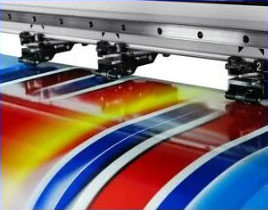Demystifying Monofunctional Acrylate Monomers: Understanding Their Unique Properties in Polymerization Processes
2024-05-08
Introduction:
In the realm of polymer chemistry, acrylate monomers serve as foundational building blocks for a vast array of polymeric materials. Among these, monofunctional acrylate monomers occupy a unique niche, offering distinct characteristics and properties that set them apart from their multifunctional counterparts. Let's delve into the key characteristics of monofunctional acrylate monomers and explore how they differ from multifunctional variants in polymerization processes.
Understanding Monofunctional Acrylate Monomers:
Monofunctional acrylate monomers are characterized by the presence of a single reactive double bond (C=C) within their molecular structure. This lone functional group imparts specific properties to these monomers, influencing their reactivity, polymerization behavior, and performance in various applications. Key characteristics of monofunctional acrylate monomers include:
1. Simplified Reactivity: Monofunctional acrylate monomers possess only one reactive site, which simplifies their polymerization kinetics compared to multifunctional counterparts. This simplified reactivity often leads to more predictable polymerization processes and allows for greater control over polymer structure and properties.
2. Lower Crosslinking Density: Due to their single reactive group, monofunctional acrylate monomers contribute to the formation of linear or lightly crosslinked polymer chains. This results in polymers with lower crosslinking density and increased flexibility, which can be advantageous in applications requiring flexibility or elongation properties.
3. Enhanced Solubility: Monofunctional acrylate monomers tend to exhibit higher solubility in common solvents compared to multifunctional variants. This increased solubility facilitates formulation and processing of monofunctional acrylate-based coatings, adhesives, and other polymeric materials.
Distinguishing Monofunctional from Multifunctional Acrylate Monomers:
While monofunctional and multifunctional acrylate monomers share common traits, such as the presence of acrylic functionality, they differ significantly in their polymerization behavior and resulting polymer properties. Here are some key distinctions:
1. Crosslinking Potential: Multifunctional acrylate monomers contain two or more reactive sites, leading to higher crosslinking density in polymer networks. This results in polymers with enhanced mechanical strength, chemical resistance, and thermal stability compared to monofunctional counterparts.
2. Polymer Architecture: Monofunctional acrylate monomers predominantly form linear or lightly crosslinked polymer chains, whereas multifunctional monomers contribute to the formation of densely crosslinked three-dimensional networks. This difference in polymer architecture influences properties such as hardness, stiffness, and dimensional stability.
3. Processing Flexibility: Monofunctional acrylate monomers offer greater processing flexibility and control over polymer structure due to their simplified reactivity. Formulators can adjust polymer properties by varying monomer composition, molecular weight, and polymerization conditions to meet specific application requirements.
Conclusion:
Monofunctional acrylate monomers play a vital role in polymer chemistry, offering unique properties and characteristics that differentiate them from their multifunctional counterparts. From simplified reactivity and enhanced solubility to lower crosslinking density and increased flexibility, monofunctional acrylate monomers provide valuable options for formulators seeking precise control over polymer structure and properties. By understanding the key characteristics of monofunctional acrylate monomers and their distinctions from multifunctional variants, researchers and formulators can leverage these versatile building blocks to innovate and tailor polymeric materials for a wide range of applications.



